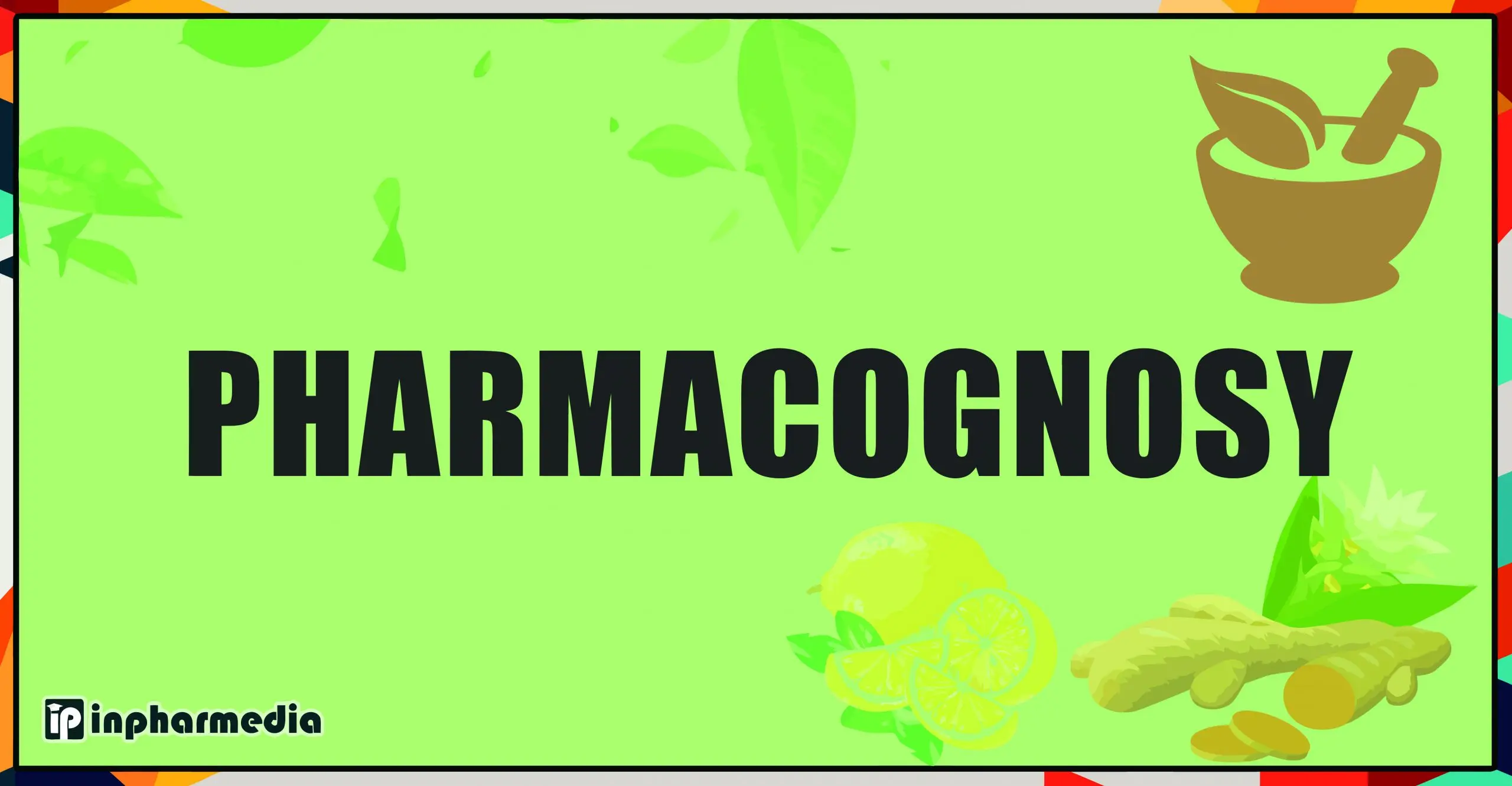Table of Contents
The Introduction to pharmacognosy:
Pharmacognosy is the study of medicinal substances derived from plants, animals, and minerals. It is the branch of pharmacology that deals with the study of drugs and other medicinal substances derived from plants, animals, and minerals.
It is a science that deals with the origin, history, chemistry, production, and use of drugs and other medicinal substances derived from natural sources. The term “pharmacognosy” was coined in the year 1815 by a German physician by the name of Johann Wolfgang von Goethe.
He used the term to describe the study of drugs derived from natural sources. Since then, pharmacognosy has become an important area of study in the field of pharmacology.
The main objective of pharmacognosy is to identify and characterize the active ingredients present in drugs and other medicinal substances. It also studies the medicinal properties of these substances and their effects on the body.
In addition to this, pharmacognosy also looks at the potential toxicity of these substances, as well as their potential for misuse. Pharmacognosy also involves the study of the methods of extraction, preparation, and purification of drugs and other medicinal substances.
It also focuses on the development of new drugs and medicinal substances, as well as their effects on the body. In recent years, pharmacognosy has become more important due to the growing demand for natural medicines.
This has led to the development of new techniques in the field, such as molecular pharmacognosy and ethnopharmacology. Molecular pharmacognosy is the study of the structure and function of drugs and medicinal substances at the molecular level.
Ethnopharmacognosy is the study of the traditional use of medicines and other medicinal substances by various ethnic groups.
The Definition and history of pharmacognosy:
Pharmacognosy is the branch of pharmacy that deals with the study of natural products derived from plants and animals, or from minerals. The term pharmacognosy comes from the Greek words pharmakon, meaning “drug”, and gnosis, meaning “knowledge”.
The main focus of this field is the identification, characterization, and use of natural products for medicinal purposes. The history of pharmacognosy can be traced back to the ancient Egyptians, who used plants such as garlic and juniper to treat various ailments.
In the Middle Ages, the study of medicinal plants was conducted by herbalists, who worked with physicians to create remedies from these natural products.
Throughout the Renaissance and the Age of Enlightenment, the practice of pharmacognosy flourished, with botanists and physicians studying the effects of various plants, animals, and minerals on the body.
In the 19th century, the development of modern pharmacology spurred the emergence of pharmacognosy as a distinct field of study. German chemist and botanist Albert Ladenburg was one of the first to apply scientific principles to the study of natural products, and his work laid the foundation for modern pharmacognosy.
In the early 20th century, pharmacognosy became an official field of study at many universities and institutes of higher learning, and since then, advances in research have allowed for the identification and characterization of various natural products for medicinal use.
Today, pharmacognosy is an important branch of pharmacy, as it provides an understanding of the natural products used in pharmaceuticals. Pharmacognosy is also used to identify and isolate active components of plants, animals, and minerals in order to develop new therapeutic agents.
Additionally, pharmacognosy is used to analyze the safety and efficacy of herbal products and dietary supplements.

The Role of pharmacognosy in medicines:
Pharmacognosy is the study of medicinal substances derived from natural sources, such as plants and minerals. It is an important component of modern pharmacology and is used to study the chemical constituents of natural products, their therapeutic use, and their safety and efficacy.
Pharmacognosy is a key component in the development of new medicines, as it helps to identify and characterize natural substances that have medicinal value.
Pharmacognosy is essential in the development of new drugs, as it allows researchers to identify and isolate active ingredients in natural products that have therapeutic potential.
By isolating and identifying the active components of a natural product, researchers can develop new drugs that target specific diseases and medical conditions.
Pharmacognosy has also been used to identify new drug target proteins and to develop new drug delivery systems. Pharmacognosy is also important in assessing the safety and efficacy of natural products.
By studying the chemical composition of natural products, researchers are able to identify potential problems associated with their use, such as toxicity or interactions with other drugs.
Pharmacognosy is also used to assess the bioavailability and pharmacokinetics of natural products, as well as their pharmacodynamics. Pharmacognosy plays an important role in traditional medicine and herbal medicine.
By studying the chemical constituents of natural products, researchers are able to identify those with medicinal value and develop new therapeutic strategies. In addition, pharmacognosy is used to assess the safety and efficacy of traditional and herbal remedies.
Overall, pharmacognosy is an important component of modern pharmacology and is used to study the chemical constituents of natural products, their therapeutic use, and their safety and efficacy.
By studying the chemical composition of natural products, researchers are able to identify and isolate active ingredients with therapeutic potential, assess the safety and efficacy of natural products, and develop new therapeutic strategies.
The Plant sources of drugs:
Plant sources of drugs are plant-based components that are used in the production of pharmaceutical products. They are a key part of the modern drug development process, providing a wide variety of active compounds with potential therapeutic value.
Plant sources of drugs can include plant extracts, plant-derived compounds, and whole plants. Plant extracts are an important source of active compounds used in the development of drugs.
These extracts are typically obtained by grinding up the plant material and then extracting the desired active compounds with a solvent. Commonly used plant extracts include those obtained from bark, roots, flowers, leaves, and fruits.
For example, the bark of the willow tree is a source of salicin, which is used in the production of aspirin. Plant-derived compounds are another source of drugs.
These compounds are isolated from the plant material and then purified and tested for their potential therapeutic value. Commonly used plant-derived compounds include alkaloids, terpenes, steroids, and flavonoids.
Alkaloids, for example, are nitrogen-containing compounds and can be obtained from a variety of plants, including the yew tree, poppy, and coca. Terpenes are organic compounds found in the essential oils of plants and can be used for a variety of therapeutic purposes.
Whole plants can also be used as sources of drugs. Whole plant extracts are obtained by grinding up the plant material and then extracting the desired active compounds with a solvent.
Commonly used whole plants include ginseng, ginger, and turmeric. The active compounds within these plants have a range of therapeutic effects, including anti-inflammatory, anti-bacterial, and anti-cancer properties.
In summary, plant sources of drugs are an important part of the modern drug development process. They provide a wide variety of active compounds with potential therapeutic value, including plant extracts, plant-derived compounds, and whole plants.
These compounds have a range of therapeutic effects, including anti-inflammatory, anti-bacterial, and anti-cancer properties.
The Animal sources of drugs:
Animal sources of drugs have been utilized in medicine for thousands of years. Ancient cultures used a variety of animal-derived remedies to treat diseases and ailments.
In modern medicine, animal-derived drugs are still used in the treatment of many diseases and illnesses. Animal-derived drugs can be derived from the tissues, organs, and secretions of animals.
These include proteins, hormones, enzymes, and antibodies. Animal proteins can be used to create biopharmaceuticals, which are drugs made from living cells. Hormones are used to treat conditions such as diabetes and growth hormone deficiency.
Enzymes are used for treating genetic disorders, and antibodies are used to combat infections and cancer. The most common animal sources of drugs are cows, horses, pigs, sheep, and chickens. Cows are the primary source of insulin, which is used to treat diabetes.
Horses are the primary source of heparin, which is used to treat blood clots. Pigs are the primary source of porcine insulin, which is also used to treat diabetes. Sheep are the primary source of thyroxine, which is used to treat thyroid disorders.
Chickens are the primary source of influenza vaccines, which protect against the flu. Animal-derived drugs are often used in combination with other medications to treat a variety of diseases.
For example, antibiotics may be used in combination with animal proteins to treat infections. Animal antibodies may be used in combination with chemotherapy drugs to treat cancer. Animal hormones may be used in combination with other medications to treat hormone imbalances.
Animal-derived drugs are generally considered safe and effective, although some medications may cause side effects or allergic reactions. As with any medication, it is important to discuss the risks and benefits of animal-derived drugs with your doctor before starting treatment.
The Mineral sources of drugs:
Mineral sources of drugs are compounds derived from naturally occurring minerals and elements, such as boron, calcium, copper, iron, magnesium, phosphorus, potassium, sodium, and zinc.
These minerals are important components of many medications, and they can provide valuable therapeutic effects.
Boron is a trace mineral that has been used to treat a variety of conditions, including arthritis, osteoporosis, and depression. It is also believed to have antioxidant properties.
Calcium is an essential mineral for strong bones and teeth, as well as for nerve and muscle function. It is also used to treat certain conditions, such as hypertension, and to prevent osteoporosis.
Copper is essential for healthy nerve and muscle function, and it is used to treat anemia and some forms of cancer. Iron is necessary for the production of hemoglobin, and it is used to treat anemia.
Magnesium is essential for the proper functioning of muscles, nerves, and the heart. It is also used to treat migraine headaches, depression, and hypertension.
Phosphorus is needed for bone and teeth formation, and it is used to treat some forms of kidney disease.
Potassium is essential for maintaining blood pressure and for healthy nerve and muscle function. It is also used to treat certain heart conditions.
Sodium is necessary for proper nerve, muscle, and blood pressure functioning. It is also used to treat certain heart conditions, such as high blood pressure.
Zinc is an important mineral for proper immune system functioning, and it is used to treat certain skin conditions, such as acne.
These are just some of the mineral sources of drugs. Each mineral has its own specific therapeutic effects and uses. It is important to consult with a healthcare professional before taking any medication containing minerals or other natural substances.
Pharmacognosy research:
Pharmacognosy research is an interdisciplinary field of research that focuses on the study of natural products and their therapeutic uses.
It involves the identification, isolation, and characterization of biologically active compounds from plants, animals, and microorganisms, as well as the study of traditional medicines and their therapeutic applications.
Pharmacognosy research includes the study of crude drugs, herbal medicines, dietary supplements, and other traditional remedies. The goal of pharmacognosy research is to discover new medicines and treatments for diseases and illnesses.
This research is conducted through the use of biochemical and pharmacological techniques, such as chromatography, spectroscopy, and bioassays. By analyzing the chemical composition of natural products, researchers can identify active compounds that may have therapeutic applications.
In addition to discovering new treatments, pharmacognosy research also helps to develop methods for the production, preservation, and quality control of natural products.
This includes the development of analytical methods to detect and quantify active compounds, as well as the identification of markers to evaluate the quality of herbal medicines and other natural products. Pharmacognosy research is also used to understand and explain the pharmacology of natural products.
By studying the effects of active compounds on the body, researchers can understand how these compounds interact with biological systems. This research can help to identify potential interactions between natural products and other medications, as well as to identify potential hazards associated with the use of natural products.
Finally, pharmacognosy research can help to develop new products or refine existing products. By understanding the chemistry of natural products, researchers can modify or combine active compounds to create more effective or targeted treatments.
This research can also help to develop new methods for the production, preservation, and delivery of natural products.
The Conclusion:
Pharmacognosy is the study of natural sources of drugs, their raw materials, and their active constituents. The conclusion of pharmacognosy is that natural sources are still the primary source of drugs, and because of this, the study of pharmacognosy is still important.
The traditional methods used to identify and extract natural products are still used today, but with the advancement of technology, new techniques are being developed that can provide more accurate results.
The understanding of the chemical composition of natural products, their therapeutic values, and the safety of their application is still an important area of pharmacognosy.
Pharmacognosy has also evolved over the years to include the study of synthetic drugs, their formulations, and the evaluation of their therapeutic efficacy.
The conclusion of pharmacognosy is that the use of natural sources of drugs is still important, but the study of synthetic drugs and their applications is also becoming increasingly important.
The conclusion of pharmacognosy is that it is an ever-evolving field of study, and its research and findings are constantly being updated. The knowledge and understanding of natural sources of drugs, their active constituents, and their therapeutic applications are essential in the development of new drugs.
Pharmacognosy is also a valuable tool in helping to identify and treat diseases and disorders, as well as in the prevention of illnesses.
The Bibliography of Pharmacognosy:
A bibliography of pharmacognosy is a comprehensive list of books, journals, and other references related to the field of pharmacognosy. Pharmacognosy is a branch of pharmaceutical science that deals with the study of medicinal plants and natural products used in the preparation of medicines.
It involves the identification, isolation, and characterization of active constituents from natural sources and their application to the development of new pharmaceuticals. Pharmacognosy is an important research field that has grown significantly in recent years.
The bibliography of pharmacognosy provides a wealth of information on the subject. It provides access to the latest research and advances in the field. The bibliography includes books, journal articles, research reports, patent documents, and other sources of information related to pharmacognosy.
The sources are organized by subject, author, and title. The bibliography also provides links to related websites and databases. The bibliography is divided into two parts.
The first part is a comprehensive listing of books, journals, and other sources related to pharmacognosy.
The second part is a collection of reviews and editorials. These reviews cover topics such as medicinal plants, natural products, phytochemical analysis, and drug discovery.
The bibliography of pharmacognosy provides a valuable resource for researchers and students in the field. It is a valuable source of information for those interested in the study of medicinal plants and natural products and their application to the development of new pharmaceuticals.
It is also a useful tool for medical practitioners who need to stay up to date on the latest research and advances in the field.
The bibliography can be used to identify sources of information, as well as to compare different sources and determine which one is most suitable for the user’s needs.
Also, read Fixed beam































Comments on “History of Pharmacognosy”
Comments are closed.